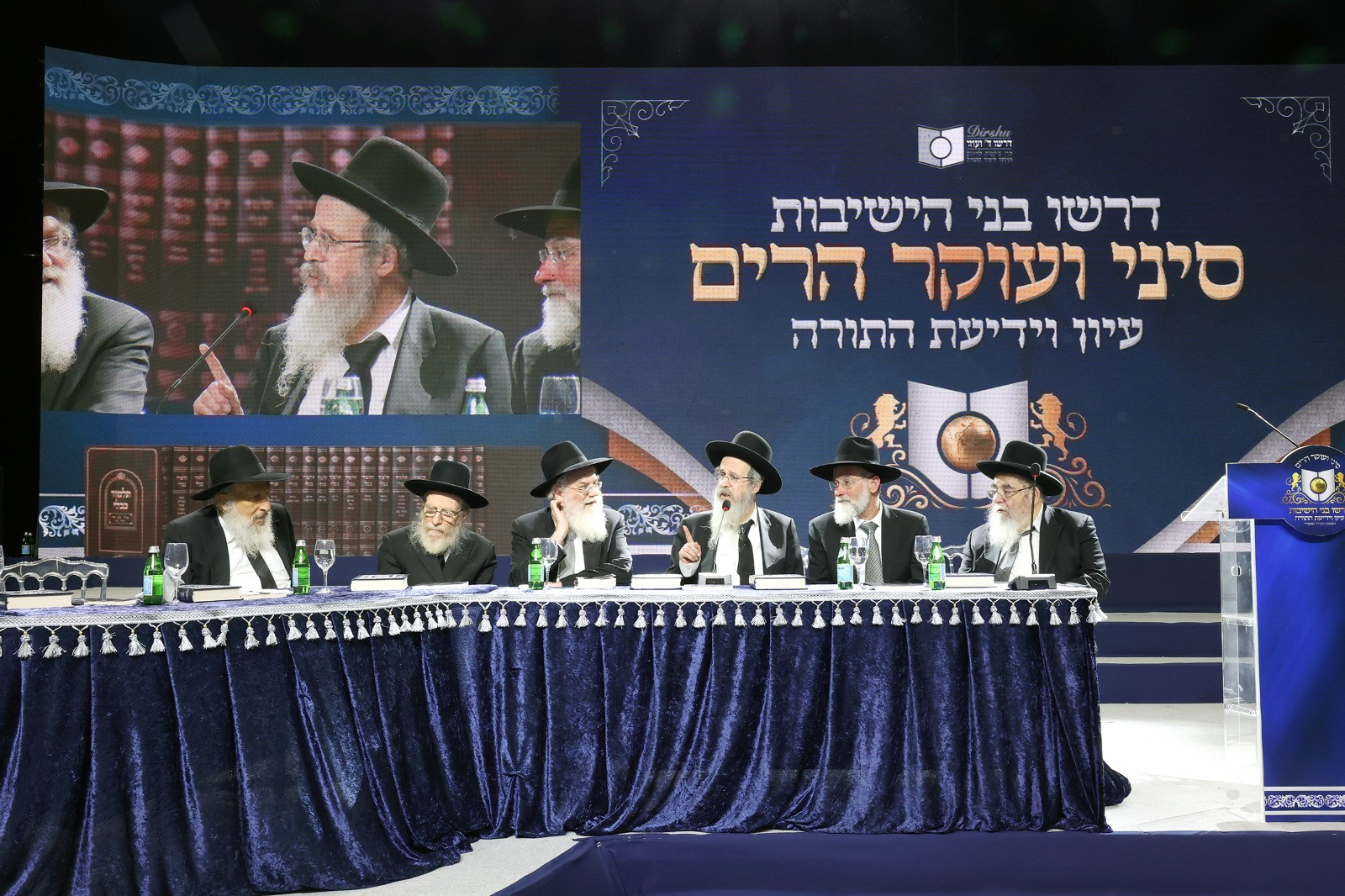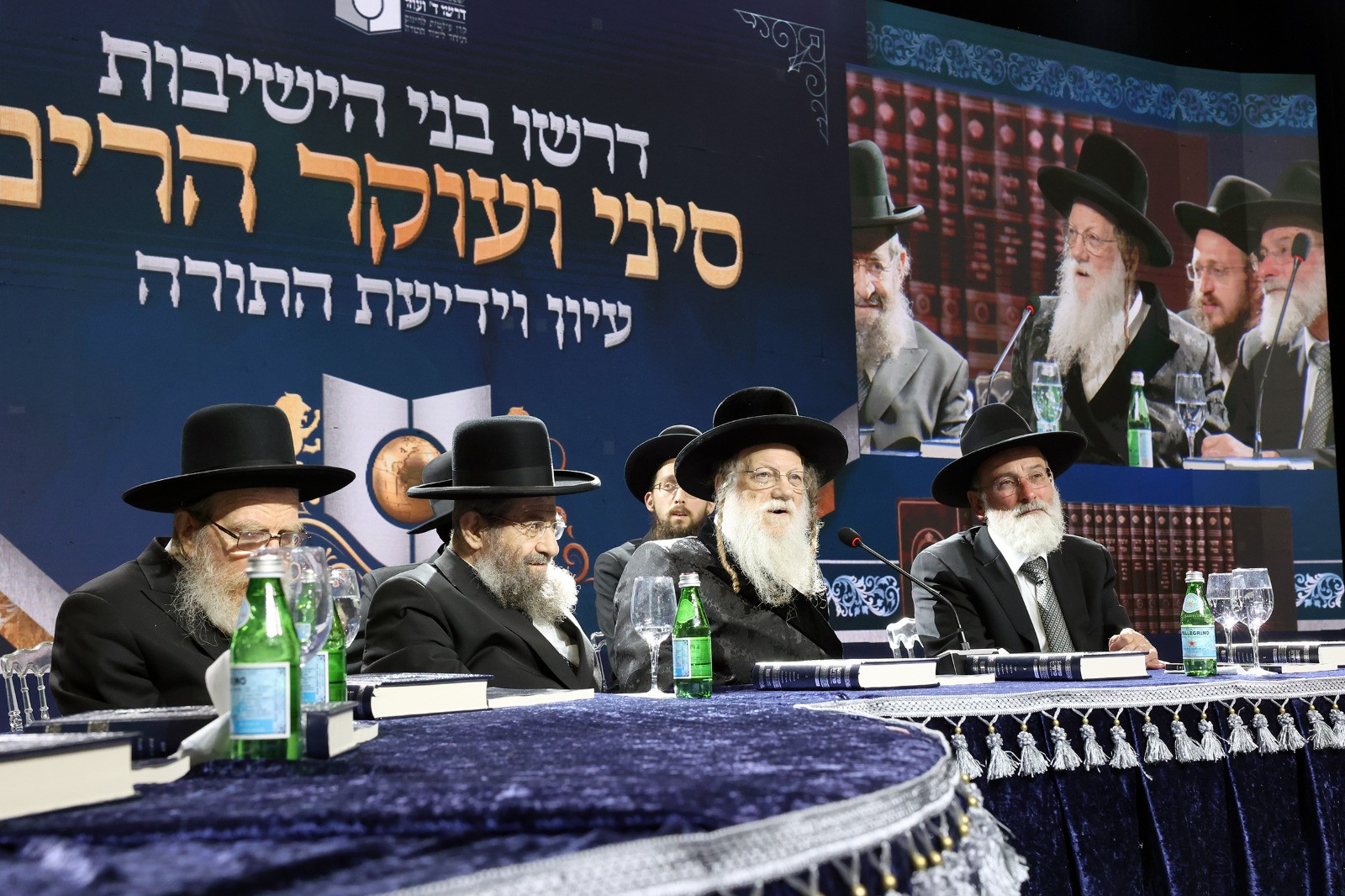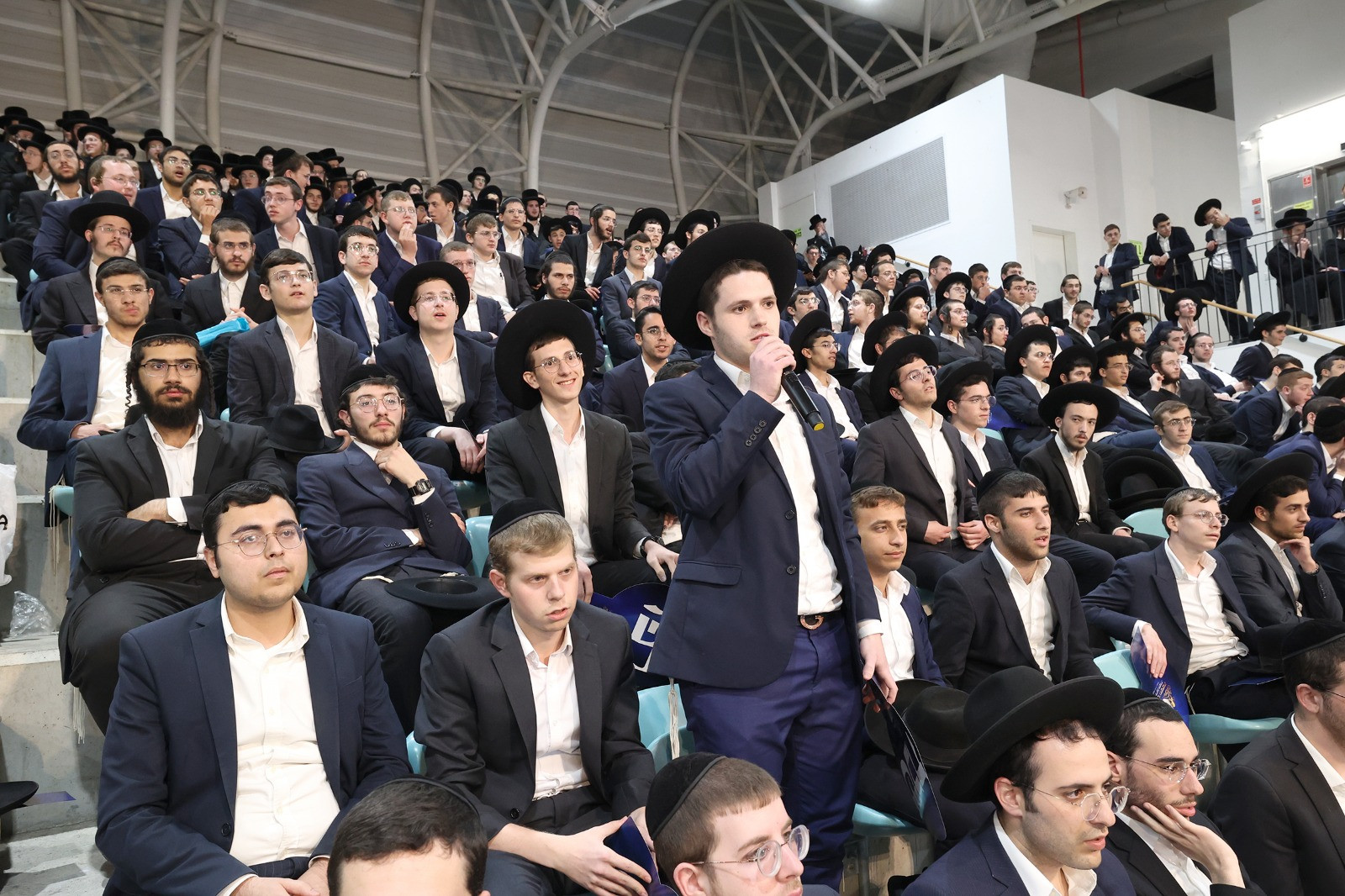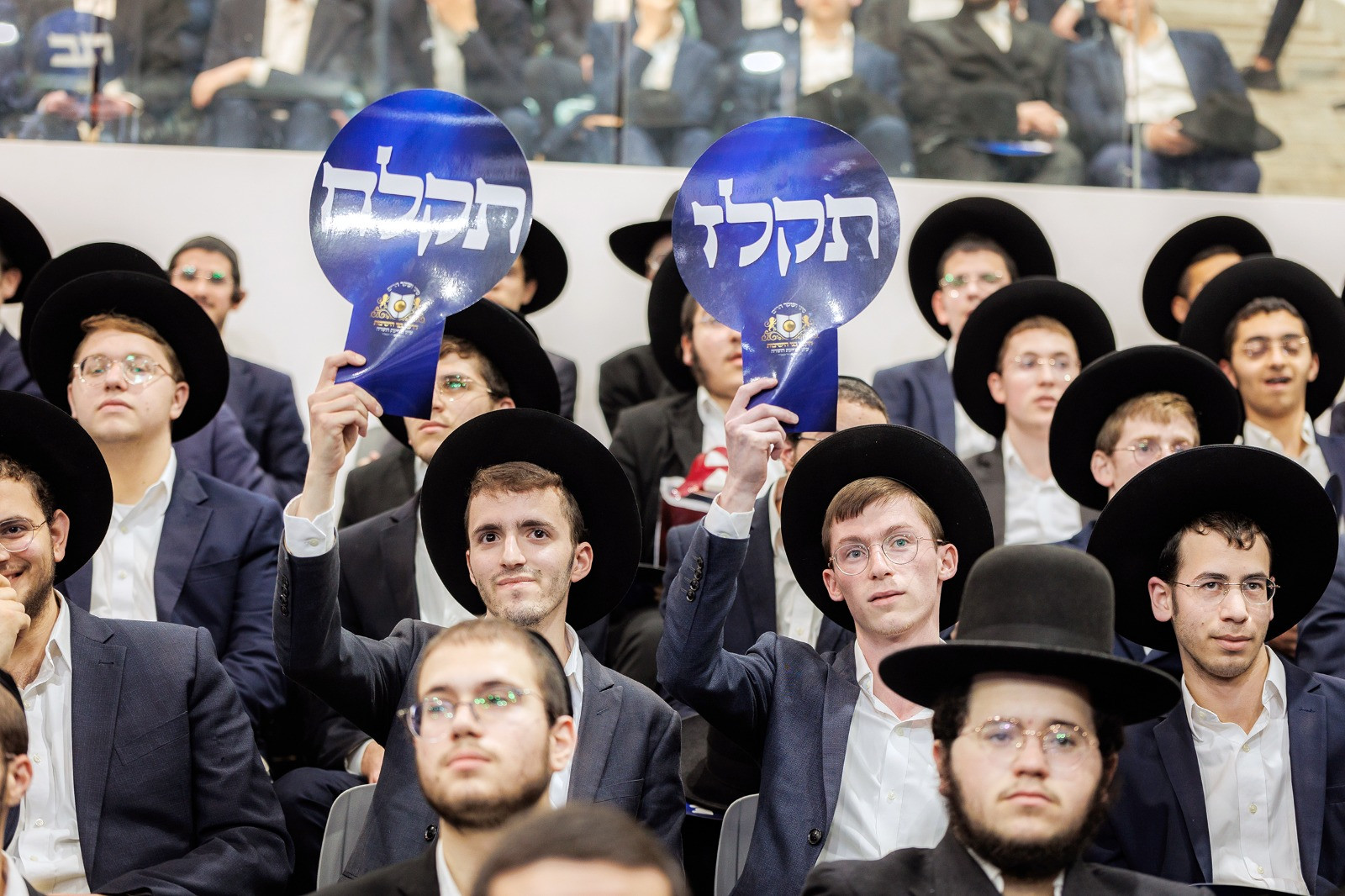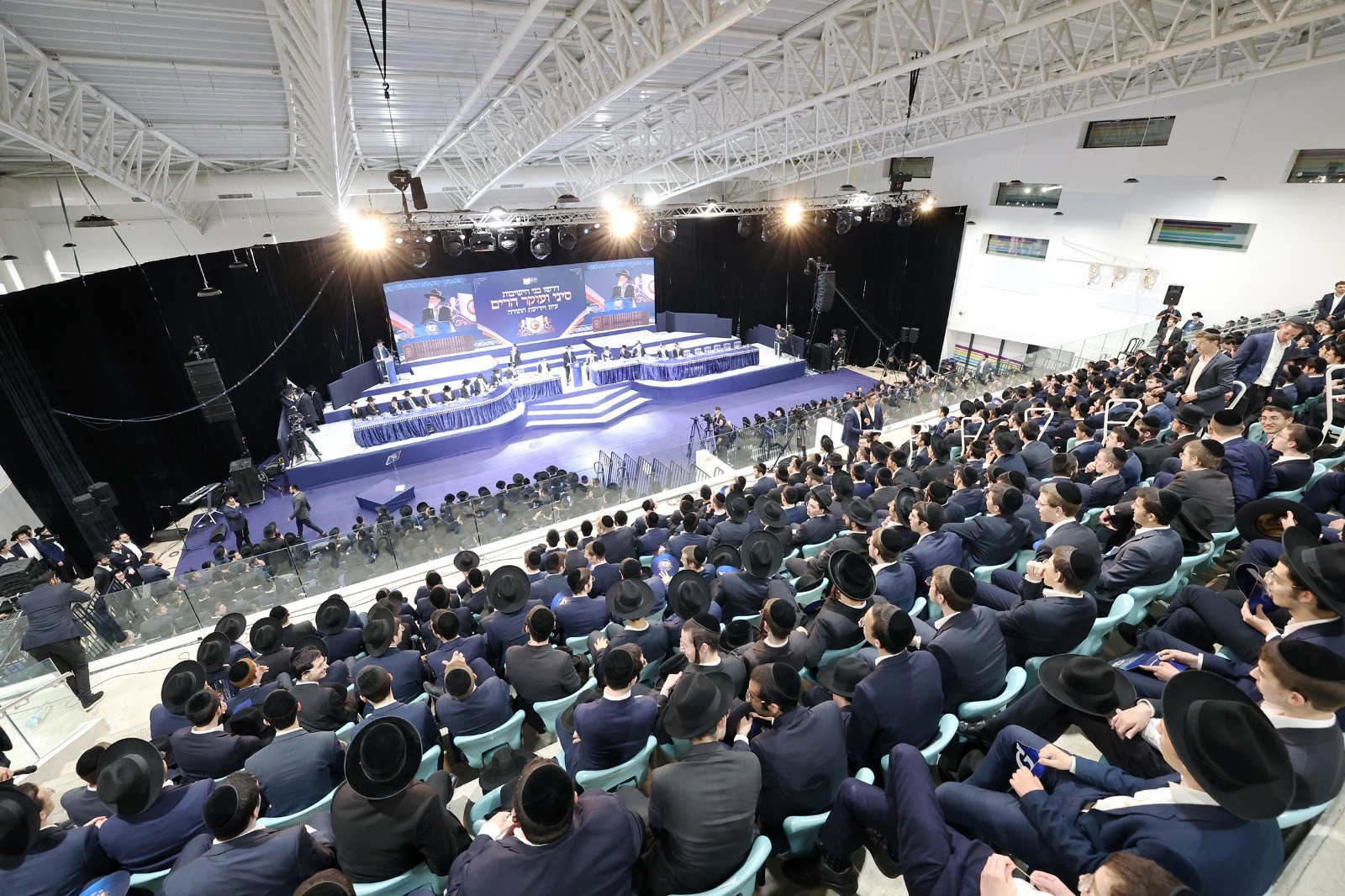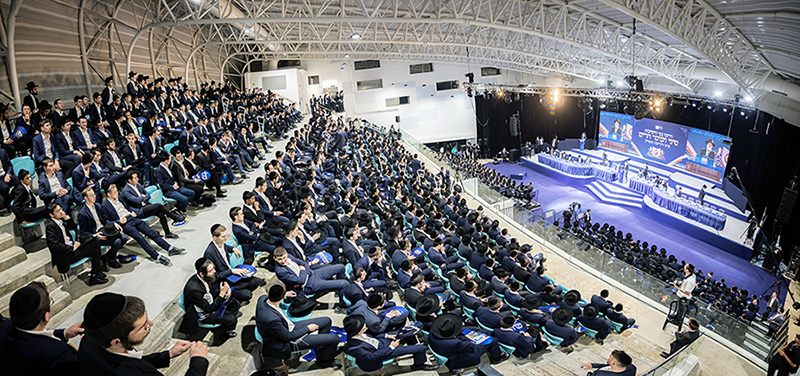The large Dirshu public farher held earlier this month was a mindboggling maamad. Over one thousand participants in Dirshu’s Bachurei Yeshivos program, a program with tens of participating elite yeshivos throughout Eretz Yisrael, came together to be tested by leading senior Roshei Yeshiva from throughout Eretz Yisrael. The Gedolei Roshei Yeshiva who asked questions were deeply gratified to see that even in today’s day and age, bachurim were capable of mastering entire masechtos that they learned in their respective yeshivos, masechtos such as Bava Kama, Bava Metziah, Bava Basra, Kesubos, Gitten and Kiddushin. Even more impressive was the fact that they hadn’t just learned it “bekiusdig,” but they were prepared and successful in answering questions that could only be answered if the masechta was learned with depth and without superficiality.
What follows is just a small sampling of some of the questions asked by the Roshei Yeshiva and answered by the bachurim.
HaGaon HaRav Chaim Feinstein, shlita, asked the first question: Where do we find a case where a dayan is permitted to take a bribe despite the fact that the Torah specifically states that a dayan is prohibited from taking a bribe?
Three bachurim, one after the other, offered true answers, but not the one that Rav Chaim was seeking. The fourth bachur who answered hits it on the head, explaining, “Dayanim took bribes from the terumas halischa.” He then explained that the Gemara in Masechta Kesubos says that dayanim who would check for blemishes took their salaries from the terumas halischa.
Rav Chaim then asked another question: Where do we find the prohibition against taking ribis, interest, in Masechta Kesubos? There is an entire perek in Bava Metziah about ribis but where do we find such a thing in Masechta Kesubos?
A bachur immediately answers that Rav Yehuda learns a gezeirah shava on the words “sima, sima” from ribis to motzi shem ra.
Rav Chaim wasn’t done and forged ahead with another question: We know that walled cities in Eretz Yisrael possess a kedusha that has halachic ramifications. Is there any case of a walled city in Eretz Yisrael that fits all criteria of a walled city, but does not have kedusha?
A bachur with the sign number 376 explained that Tosafos holds that a walled city with a majority of residents who are not Jewish, does not possess kedusha.
Rav Chaim countered, what is the practical halachic difference in such a case?
The bachur, without batting an eyelid, replied, “When a naarah hameursah, a young girl who is halachically married, is unfaithful to her husband she is punished by stoning. The Torah says that the stoning is supposed to take place at the gates of the walled city. If, however, the walled city, is inhabited by a majority of non-Jews, the stoning takes place at the door of her home.
The smile of satisfaction on the face of Rav Chaim said it all!
The most amazing sight during the maamad was to see that for every answer given by the bachurim, Rav Chaim continued by probing deeper and deeper to see if they really understood what they were saying. In fact, several times, the exchanges between the venerated Rosh Yeshiva and the young bachurim became fiery exchanges as the bachurim defended their point of view.
When Rav Boruch Dov Diskin, Rosh Yeshivas Orchos Torah began his questions, the bachurim had already been ‘warmed up’ by Rav Chaim Feinstein. There was nervous energy and electricity in the air when he asked an open-ended question.
“Tell me,” Rav Diskin asked, “how many things are included in the hekish of havaya l’yetziah, the hekish comparing the acquisition of a marriage with the dissolving of a marriage through a get?”
Suddenly, a flurry of signs – ten, twenty and then over one hundred signs are waving in the air. That is how many bachurim were ready to answer! Bachurim were being called on one by one with each bachur giving examples. On some, Rav Boruch Dov interjects, “Is that according to everyone or are there those who disagree?”
Finally, after about ten minutes, each and every one is enumerated, even one that was proposed as a hava amina in perek hazorek is mentioned!
Rav Boruch Dov asked another question: Usually, when a person brings something to a shomer to watch for him, the shomer acquires the item by the fact that the item is placed in the shomer’s property. Can someone give something over to a shomer to watch, without actually performing an act of kinyan?
Number 34 answered, “The Gemara specifies that one cannot. The Gemara is found in Bava Metziah 34, where it says that if the shomer is in a swamp that is not owned by him, he does not acquire the item he is supposed to watch.
“Yes, that is correct,” agrees Rav Boruch Dov, “but here I understand that the test includes Rashi and Tosafos as well. Does anyone disagree with this?”
Number 176 raises his sign and explains, “Indeed, according to Rashi the shomer does not acquire it, but Tosafos brings Rabbeinu Chananel who maintains that the shomer is koneh the item even if he is in a swamp that does not belong to him!”
Rav Dovid Hofstedter the Nasi of Dirshu also asked several questions that made waves.
Rav Dovid asked, “The Gemara teaches that anyone can write a get. Does this mean that even a deaf person, a shoteh or a minor can write a get?”
Number 480 answered that if a gadol, who is obligated in mitzvos, is standing and watching, the shoteh or minor can also write the get. According to Rav Meir, you don’t even need a gadol watching over him.”
Rav Dovid countered, “The Gemara says that whoever writes the get has to be ‘bnei krisus’?”
Sign number 480 waves in the air and the bachur answers, “When he grows older, he will be a ben krisus and thus he is considered a ben krisus now too….”
“Gevaldig! Gevaldig,” Rav Dovid said.
The Modzhitzer Rebbe posed a probing question: “Let’s say someone wanted to give a get through a shaliach. When he initially sent the shaliach the emissary was sane but along the way he became a shoteh, he was gripped by insanity, what is the Rambam’s shita and what is Rashi’s shita?”
The place erupted as bachurim related the different answers with their practical differences in halacha according to each outcome.
Rav Chaim Peretz Berman, Rosh Yeshivas Ponovezh related a personal story, ending with a question. “Decades ago, when I was learning Masechta Gitten, I went to bed one night and dreamed that I was in beis din and a husband and wife came in front of the beis din and the husband said, ‘I divorced my wife’ and the wife said, ‘Indeed.’ One dayan responded that there are two reasons to believe him and to ascertain that what he is saying is true. What are the two reasons?” Rav Berman asked.
No sooner did he end the question when a spirited debate filled the auditorium. One bachur gave an answer and Rav Berman tried to refute it but another bachur came to the first bachur’s rescue. Rav Berman then gave his own reply…
Back and forth, the spirited Torah debate brought intense joy to everyone there.
Indeed, if there was one overriding feeling permeating the air as the evening wound down, it was the overriding feeling of simchas haTorah coupled with the overwhelming satisfaction that comes with yedias haTorah through yegias haTorah.


